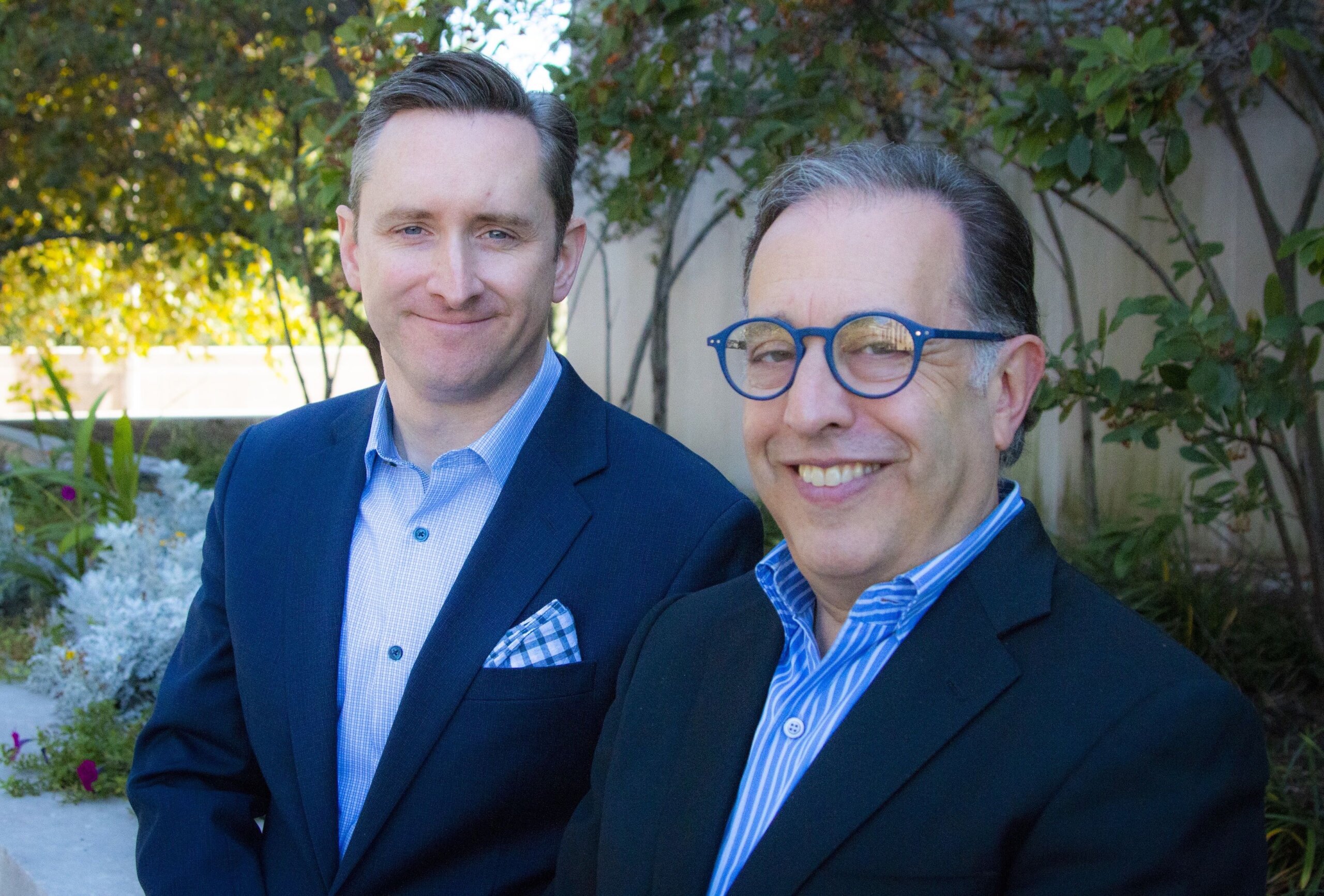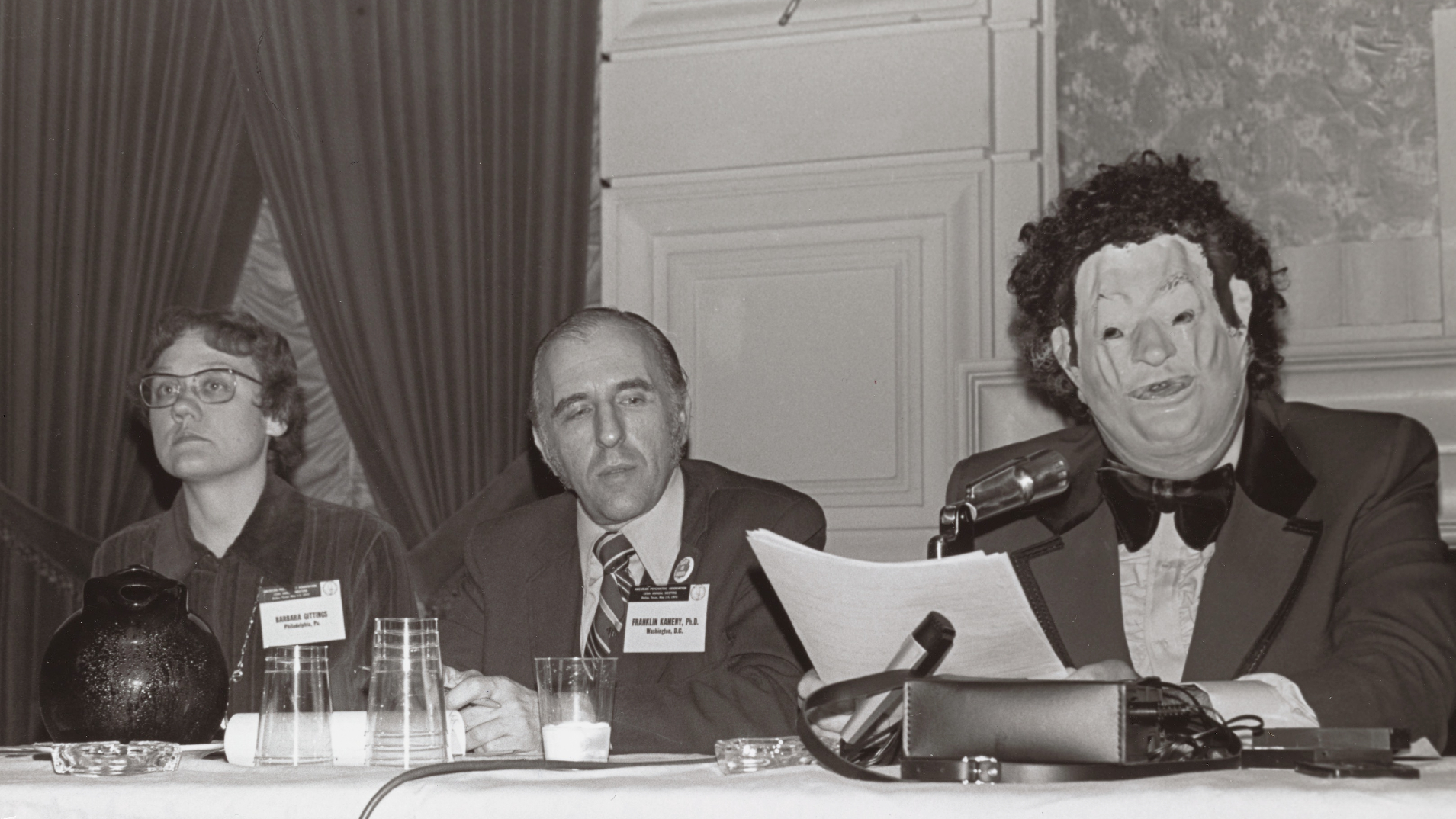At a 1972 American Psychiatric Association (APA) conference, a man in a mask single-handedly shifted the course of the gay rights movement. Wearing a rubber, Leatherface-esque mask and standing in front of APA delegates, John Fryer, a Philadelphia-based psychiatrist, told the group that he was both a practising psychiatrist and gay. He called himself Dr. Anonymous, keeping his identity hidden in fear of losing his licence for coming out.
At the time, the APA’s official position on homosexuality was that it was a mental illness, one that could be “cured” through counselling and medical treatments like shock therapy. The designation was used to justify the lawful oppression of people on the basis of their sexual orientations, and the gay rights movement couldn’t truly begin to fight that oppression until the designation was overturned.
Fryer spoke of how the designation was deeply faulty in its logic, and had caused irreparable harm to countless people. “This is the greatest loss, our honest humanity, and that loss leads all those others around us to lose that little bit of their humanity as well,” he said in his speech. “For, if they were truly comfortable with their own homosexuality, then they could be comfortable with ours.” He was caught in the middle, a psychiatrist bound by the APA’s authority and a victim of its profound prejudice. That was categorically wrong, he argued, and the designation had to end. Homosexuals aren’t mentally ill, and the APA needed to acknowledge and repair the harm that label had done.
Miraculously, Fryer’s speech worked. His testimony resonated with the delegates of the APA. A year later, in 1973, homosexuality was removed from the Diagnostic and Statistical Manual of Mental Disorders, the definitive diagnostic manual for mental illnesses. In 1994, more than two decades after his speech, Fryer revealed his true identity at another APA meeting. Fryer’s bravery has been widely acknowledged as a major factor in the ongoing chain of events leading to queer equality in America.

Credit: Courtesy Cured/PBS
But Fryer’s speech didn’t exist in a vacuum. It was the culmination of an arduous series of activist efforts aimed directly at the APA over the course of several years. Those efforts, and their climax at the 1972 APA meeting, are the subject of Cured, a new documentary premiering this week on PBS. Xtra spoke with Patrick Sammon, one of the film’s directors and producers, about making the doc and the impact of Fryer’s game-changing speech.
How did this film come together?
It’s been quite an odyssey to get this film out into the world. My friend Charles Francis wrote a script about the life of [American gay rights activist] Frank Kameny, and in 2014 he had me read it. One of the scenes in the script is the 1972 APA annual meeting in Dallas where Dr. Anonymous—the man in the mask, John Fryer—had to disguise himself in order to testify what it was like to be a [gay] psychiatrist. I had previously read about the story in various LGBTQ2S+ history books and was familiar with this fight about the mental illness labelling of homosexuality. Reading the film script, this scene just jumped off the page as something that would make an incredible documentary.
I did some more digging and was pleasantly surprised to find that there hadn’t been a documentary made about this story. As I started looking into it, it quickly became clear how central this fight was. As long as we were classified as mentally ill, the government wasn’t going to do anything to treat us any better. This really had to be the first domino to fall. I very quickly recruited my friend and colleague Bennett Singer to join me. It’s an incredibly humbling experience meeting all of the activists who were involved in this fight.
This film is so narrowly focused on the attempt to overturn the designation by the APA. What harm did this designation deal to the queer community?
The mental illness label had a huge impact on the average person at this time. It was a surprise to us as we dove into the story and learned the wide impact. Business and government [agencies] used it as an excuse to discriminate. So, if you were a public school teacher and found to be gay or lesbian, you were fired. If you were gay or lesbian, you were fired from the federal workforce. If you were in a marriage and found to be gay or lesbian you would lose your kids. This mental illness label was one of the main justifications that various entities used to explain their discrimination against LGBTQ2S+ people. It had a pervasive impact. And aside from anything else, it also had a huge impact on the psyche of gay and lesbian people.
“In a world where you didn’t even know if there were other people like you, the first thing you learned was you’re sick.”
A number of the people we interviewed talked about going to libraries as teenagers trying to make sense of who they were by searching out books about homosexuality. And all they would find were books that described them as being mentally ill. In a world where you didn’t even know if there were other people like you, the first thing you learned was you’re sick. That had a huge impact in creating internalized homophobia.
Activists in the documentary describe this attempt, which ended up being successful, as seeming like an impossible task to accomplish at the outset. What made this effort so difficult?
Sometimes, people think that historical outcomes are inevitable. But this outcome wasn’t inevitable. At the start of this fight, experts told us probably 95 percent of APA members would have thought that homosexuality was a mental illness. It was really the ultimate David versus Goliath battle. You have these entrenched, old school psychiatrists—many of them old white men—who were set in their ways. That was the group that these activists had to confront, and it’s really inspiring to think that they weren’t dissuaded from engaging in the fight. They put one step in front of the other and demanded that the APA listen to them. That was a huge uphill battle that they faced, but somehow, they persevered.
Given all that difficulty, why would you say the removal of this designation was such an important moment in queer history?
This was such an important moment in queer history because it was the first domino that needed to fall in order to allow other progress. As long as this mental illness label was there, making progress on the path to equality was going to be much more difficult, if not impossible. It was the foundational change that had to happen in order for anything else to get done and you started to see that later in the 1970s. In 1975, the U.S. Civil Service Commission lifted a ban on gay and lesbian federal employees. It was a huge snowball that started to move down the hill. It allowed other progress to be made.
Do you believe that the harm this designation dealt has been rectified?
Certainly, the impact of this mental illness label is still felt today. Hundreds of thousands of people have been forced at some point in their lives to go through conversion therapy. Most of them are young people whose parents send them away to have their sexual orientation or gender identity changed, and of course we know that can’t be done and we know that these efforts cause lasting emotional harm. The roots of the modern conversion therapy movement started in the spring of 1974, right after this decision by the APA, because psychiatrists who believed in changing LGBTQ2S+ people knew that they couldn’t stand behind the mental illness label anymore so they had to go their own way. These organizations flourished, unfortunately, starting in the mid ’70s. They caused so much harm to hundreds of thousands of LGBTQ2S+ people and that’s still with us in the U.S.
One of the things we hope is that [the film] will be used as a tool to educate people about the ongoing use of conversion therapy. I think it’s important to point out, though, in the early 1970s, the APA and the American Medical Association believed that homosexuality was a mental illness. Now they’re all on the side of standing up against conversion therapy and that’s an important change, but certainly more can be done to continue to address these issues and the legacy of this mental illness designation.
Cured airs on PBS on Oct. 11 at 10 p.m. EDT. It will be available to stream on pbs.org for 30 days after the broadcast.
Correction: October 14, 2021 2:50 pmA previous version of this story incorrectly stated that John Fryer spoke in front of the American Psychological Association, not the American Psychiatric Association. The story has been updated.


 Why you can trust Xtra
Why you can trust Xtra


